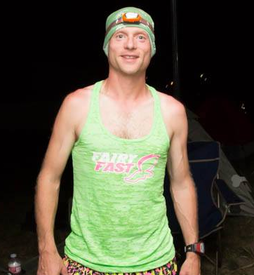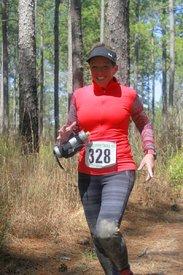Do you speed up/slow down/maintain the same pace on uphills?
Options

MartinaNYC
Posts: 190 Member
Yesterday I had a 4.5 miles hill run with my team- we were supposed to go easy on flats and downhills and surging to faster than half marathon pace on uphills.The first 2 miles were tough but doable-changing pace has not been a big issue. Then we had to run a 0.32 mile-grade of 4.4% hill-I couldn't keep up with the higher pace and I struggled a bit but afterwards I felt awesome! I ran the rest of the smaller hills easily and I felt as if I could keep on going forever!
Now, my strategy at races (I train and race mostly in Central Park) has always been: slow on uphills/fast on downhills because uphills are tough and I always assumed that by going faster on uphills, it would take me a long time to recover afterwards. However, yesterday it wasn't bad afterwards- I had to slow down a bit after every uphill but it took me just 1min or so to recover and I want to understand if the way I felt after running that big hill came from the fact that we were speeding on uphills or from something else.
I have a 10K on Saturday and would like to know what youR strategy is when it comes to running hills! THANKS AND HAPPY NATIONAL RUNNING DAY!
Now, my strategy at races (I train and race mostly in Central Park) has always been: slow on uphills/fast on downhills because uphills are tough and I always assumed that by going faster on uphills, it would take me a long time to recover afterwards. However, yesterday it wasn't bad afterwards- I had to slow down a bit after every uphill but it took me just 1min or so to recover and I want to understand if the way I felt after running that big hill came from the fact that we were speeding on uphills or from something else.
I have a 10K on Saturday and would like to know what youR strategy is when it comes to running hills! THANKS AND HAPPY NATIONAL RUNNING DAY!
0
Replies
-
You know how I think...ATTACK THOSE *kitten*/ HILL SPRINTS!0
-
I tend to charge up hills and then recover on the downhill.0
-
I try to increase my step while upping hills and keep the pace... While the downhill It's just to recover ...0
-
Generally even effort on the hills (so that results in a slower pace).0
-
This is really interesting. I always assumed it was better to slow down on hills, too. I'll definitely have to try switching things around now.0
-
I have a 4 mile hill run that I do, and I run as fast as I can up and down the hills. It's broken up so there are some flats. But some of the grades are very steep - 14% grade. If they are over 2% I lean far into them and bounce (learned it from the Kenyans) with a longer stride and I make better time up the hill than I do on the flat ground. Low grades suck, the just grind you down.
I always have a strategy to take it a little easy in the beginning of a 10K unless there are a lot of downhills in the first 2 miles. It there are, I cruise. Then I take mile 3 and 4 and do a steady pace, and crank it up for 5, and really crank it up for 6. Because of my hill experience, I always take advantage of them going up, or down.0 -
It seems to me that a hill is similar to a headwind or excess weight in that extra effort is required to maintain your pace.
I don't see a reason to run any faster because the ground is sloping upward than I would if I were to start running into a headwind or if I were to gain weight/run with a rucksack on.0 -
My 2 cents... it depends on the activity. Your approach will vary depending on whether you are training or in a race. During training you want to run like your are about to be asked to do it again. Conversely during a race, you want to leave it all on the course.
From a training standpoint, We coach that its consistency that counts most on hills and recommend people train with HRM. The idea is to keep the exertion level the same throughout your hills session. Speed is only relevant as it pertains to your heart rate. Running technique is critical as far as adjusting to exertion levels (i.e. shorten your stride, maintain turnover, form). During training we encourage users to slow down and use the downhill to recover their heart rate.
As for race strategy... You are playing beat the clock. Hills can be free speed as long as you don't burn yourself out and don't injure yourself. Always be conscious of proper form and be careful not to over stride. I would maintain a consistent effort on the uphill, shorten your stride and keep your turnover going. Once, you reach the top....let 'er rip on the downhill making sure not to over stride. Treat it like you are falling forward and aim to a mid foot or forefoot strike.0 -
Kill The Hills!!!
I take hills as hard and as fast as I possible can. Every race I have ever run and my upcoming marathon has been and will be a hilly course. Train for the hills. Hills are your friend!
Kill The Hills!!!0 -
I try as hard as I can to maintain my cadence. My form changes per the gradient of the hill. This goes for ascent and decent. You can have a love hate relationship with hills. They hurt so good.0
-
I live in Illinois. The highest point is the Sears Tower.0
-
I lean into hills, shorten my stride a bit and increase foot turnover rate. End result is usually maintaining pace, depending on the grade of the climb0
-
Just to update you, I kept the same effort on the hills (thoughest hills were between mile 2 and mile 3.5) but ended up with a FASTER pace- go figure! I now can run hills easily enough BUT I found out that your legs will feel tired not doing but afterwards! Last mile I [unfortunately] had to slow my pace by 20" because my body was tired... I still PR'd though
 0
0 -
Depends on if you are doing "hill training," how steep the "hill" is, and how long the run is. From Byron Powell's "Relentless Forward Progress: a Guide to Running Ultramarathons":
"Even the world's best trail runners walk when the terrain, slope and distance dictate they do so....For instance, during the 12-kilometer 2010 World Mountain Running Championships, Max King, the second American on the silver-winning US team, 'didn't walk much, but there was a steep two mile section of which I walked probably 10 percent. I never like to [walk], but sometimes it just makes sense.'....as a hill's gradient increases, so will the effort required to run up it. In longer races, the effort needed to run a particular incline may exceed the average effort a runner will optimally expend during a race and, therefore, burn through fuel stores too fast. In shorter races, it might simply be impossible to continue running up a steep pitch...So when does Max King switch to walking? 'If I figure out that walking is just as fast as running, then it is pointless not to walk.' "
That said, in training runs of about 16 miles or less, I make a point to try to run up hills as much as possible. But in a race I would do what is most efficient.0 -
I go up it faster (probably still slower than a flat depending on the steepness). I recover pretty fast, so hitting the flat for me after the hill for about .1 of a mile, my heartrate is back to normal.0
-
I'll go with he slower uphill and faster downhill argument. You use exponentially more energy going uphill than downhill at the same pace. My objective in a race is to use my energy consistently. Slower uphill, make up for it on the downside and keep my pace on the same overall target. To say you should run faster uphill would kind of be like saying you should shift to a higher gear when biking up a hill, right?0
-
I try as hard as I can to maintain my cadence. My form changes per the gradient of the hill. This goes for ascent and decent. You can have a love hate relationship with hills. They hurt so good.
I have been thinking about this thread for a while. The area i run is full of hills (thinking "rolling New England roads). And the above really describes well how I handle them. It usually feels like spinning on a bike...I just keep the turnover going and for whatever reason, I usually hit the top feeling pretty good. But, that does mean the pace slows up a bit.0
This discussion has been closed.















